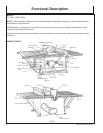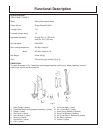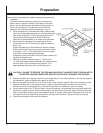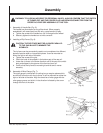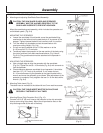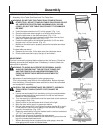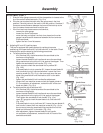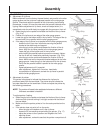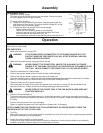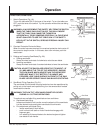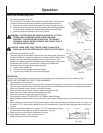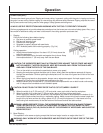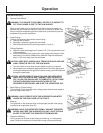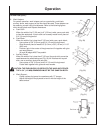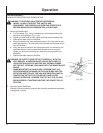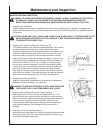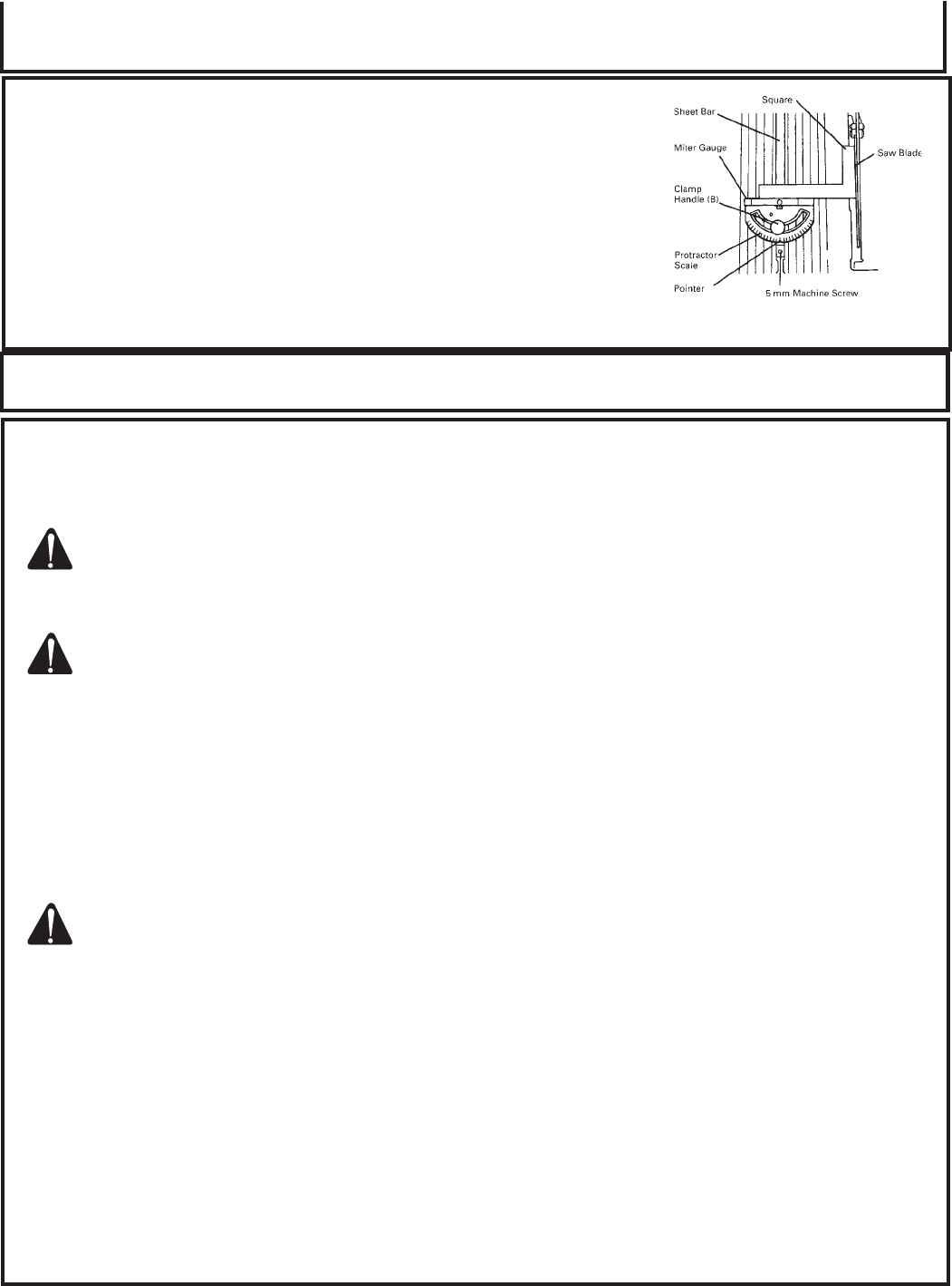
18 Table Saw Operator's Manual
Operation
APPLICATIONS:
Wood (hard or soft woods)
PRE-OPERATION:
1. Make sure the switch is turned OFF.
WARNING: IF THE POWER CORD IS CONNECTED TO THE POWER SOURCE WITH THE
SWITCH TURNED ON THE POWER TOOL WILL START SUDDENLY AND CAN
CAUSE A SERIOUS ACCIDENT.
2. Make sure the power source is appropriate for the tool.
WARNING: NEVER CONNECT THE POWER TOOL UNLESS THE AVAILABLE AC POWER
SOURCE IS OF THE SAME VOLTAGE IS THAT SPECIFIED ON THE NAMEPLATE OF
THE TOOL. NEVER CONNECT THIS POWER TOOL TO A DC POWER SOURCE.
3. Check the saw blade for visible defects.
Confirm that the saw blade is free of cracks or other visible damage.
4. Confirm that the saw blade is attached securely to the power tool.
Using the supplied wrench, tighten the set nut on the saw blade spindle to secure the saw blade. For details,
see Fig. 33 in the section on "SAW BLADE MOUNTING AND DISMOUNTING."
5. Check the safety cover for proper operation.
Saw blade guard is designed to protect the operator from coming into contact with the saw blade during
operation of the tool. Always check that the safety blade guard moves smoothly.
WARNING: NEVER OPERATE THE POWER TOOL IS THE SAW BLADE GUARD DOES NOT
FUNCTION SMOOTHLY.
6. Check the Power Receptacle.
To prevent overheating, accidental stopping or intermittent operation, confirm that the power cord plug fits
properly in the electrical receptacle and does not fall out after it is inserted. Repair and replace the receptacle if
it is faulty.
7. Confirm the tool's power cord is not damaged.
Repair or replace the power cord if an inspection indicates that it is damaged.
AFTER CONNECTING THE POWER PLUG TO AN APPROPRIATE AC POWER SOURCE, CHECK THE
OPERATION OF THE TOOL AS FOLLOWS:
8. Trial Run.
After confirming that no one is standing behind the power tool, start and confirm that no operating abnormalities
exist before attempting a cutting operation.
9. Inspect the rotating stability of the saw blade.
For precise cutting, rotate the saw blade and check for deflection to confirm that the blade is not noticeably
unstable; otherwise, vibrations might occur and cause an accident.
Assembly
ADJUSTMENT (cont.):
5. Adjustment of miter gauge:
The miter gauge should be square to the saw blade. Check and adjust
the milter gauge the following procedures.
To adjust pointer 0 setting.
a. Loosen the clamp handle (B) and place a square against both the
saw blade and miter gauge. The pointer should indicate 90° on the
protractor scale on the miter gauge.
b. If the pointer does not point to 0 on the miter gauge;
- tighten clamp handle (B).
- loosen the 5 mm machine screw on the sheet bar.
- adjust the pointer to the 90° position and tighten the 5 mm
machine screw on the sheet bar. (Fig. 18)
- after adjustment, recheck to see that the pointer now points to 0.
(Fig. 18)



